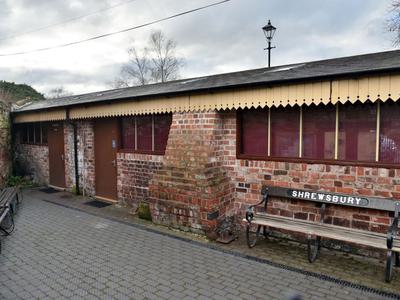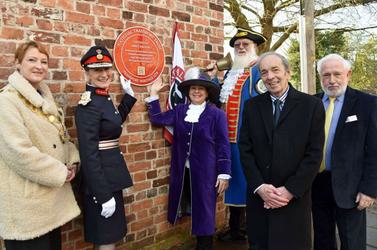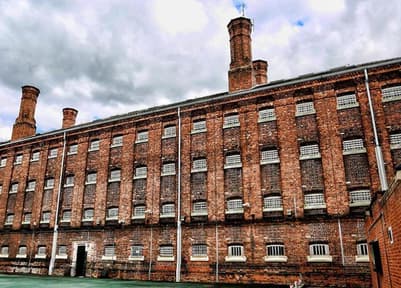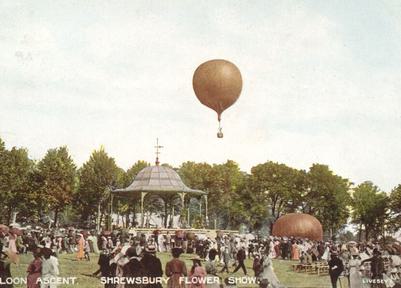- Features
- The story of Shrewsbury's Abbey Station
The story of Shrewsbury's Abbey Station

Abbey Station was opened on 13th August 1866 during a period of 'railway mania,' being built on the site of the Abbot’s Lodging of the Benedictine monastery. Local Shrewsbury man and railway contractor Richard Samuel France had acquired the Abbey Mansion, which he promptly demolished.
He was a promoter for the Potteries, Shrewsbury & North Wales Railway in 1862 and constructed the line (colloquially called 'The Potts') to provide his own terminus after he was refused permission to access Shrewsbury Station by his business rivals the LNWR and the GWR. Much like today; there were difficult business circumstances, countless litigations, and aggressive competitors.
By the time the line was ready to be opened in August 1866, a sum of £1.5 million had been spent (£60,000 per mile!)
Financial difficulties on the horizon
Disaster was looming… our first Black Friday! Overend, Gurney & Company, in London - a massively important financial institution and Britain’s largest discount house - became insolvent for £11 million; equivalent to £1.5 billion in today’s money. The Times described it as "Black Friday" (on 11th May 1866). There was panic and the effect on the Potteries, Shrewsbury & North Wales Railway was fatal, with the line closing on the 21st December 1866.
Richard Samuel France had antagonistic business rivals and disputes with members of the House of Lords and was called before the Bar of the House of Commons on 1st June 1874 for an official admonishment by the Prime Minister Benjamin Disraeli (one-time Member of Parliament for Shrewsbury).
For a while Mr France lived at The Monklands (he renamed it from New Hall, possibly after the skeletons he had found) in Abbey Foregate, Shrewsbury. After some financial difficulty, he was forced to repay £1,570 9s 10d when his affairs were liquidated by arrangement in 1881, and just six months later died aged 55. Despite all his endeavours, hard work, stubborn dedication and enthusiasm, he left just £142 gross (£89 4s 6d net) in his will.

A prosperous next chapter?
A group of wealthy Shrewsbury businessmen, many living on Kingsland, stepped in to form the Shropshire Railways Company in 1888, but in 1895 receivers were appointed to the failed project. Another failure for the station!
In 1906, the board of directors met with Colonel Holman Fred Stephens, the chairman and managing director of the Kent & East Sussex Railway, and he formed the Shropshire & Montgomeryshire Light Railway. The line reopened with a champagne toast by the Mayor of Shrewsbury to huge crowds and excitement!
Following Stephens' death in 1931, the line continued to operate until 1933, when it ceased operating for passenger traffic.
Post-war activities and years of dereliction
On 3rd September 1939, Prime Minister Neville Chamberlain announced that Britain was at war with Germany and the Second World War began.
From 1st June 1941, all trains on the Shropshire & Montgomeryshire Light Railway were operated by the military, with 200,000 tons of high explosives transported and stored at Kinnerley. Abbey Station served as the Air Raid Precautions centre for Shrewsbury.
Operations ceased in 1960, after the Anglo-American Oil Company had been using the Abbey Foregate yard as their depot.
It lay derelict until the Shrewsbury Railway Heritage Trust was formed in 2003 by the vision of local councillor Mansel Williams and a supportive committee. The station opened once more in 2012, but this time as a heritage and community centre.

From dereliction to promoting heritage and community
The railway heritage centre trustees love welcoming visitors and are proud to tell townsfolk and tourists about Shrewsbury’s rich railway heritage.
The charitable trust was recently awarded a prestigious Red Wheel Heritage Plaque from the National Transport Trust – the first awarded in Shrewsbury!
The visitor centre, located in the original station building, is also available for use by social, charitable and business organisations for meetings and welcomes enquiries.
More Shrewsbury history


